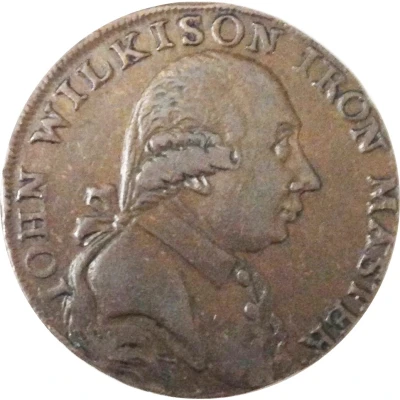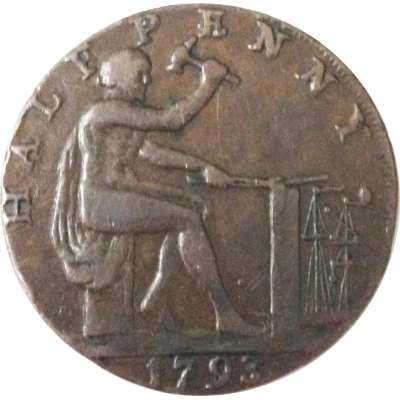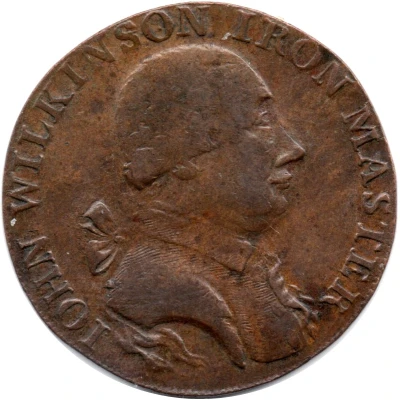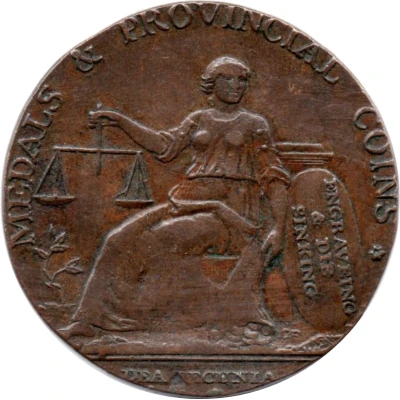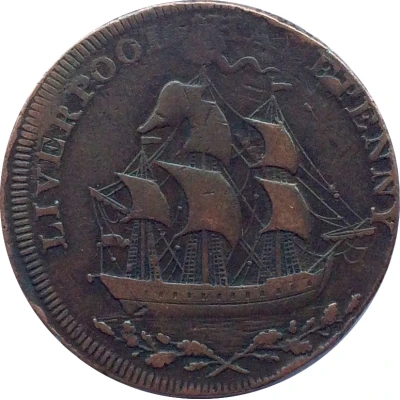
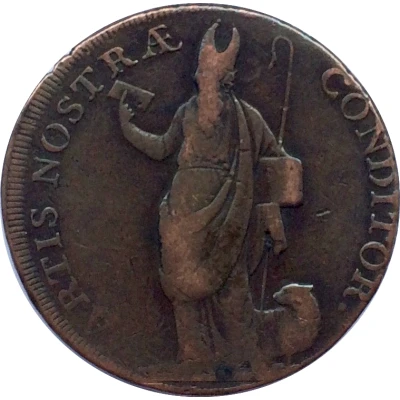

© mbaes
½ Penny Lancashire - Liverpool / Bishop Blaize ND
| Copper | 10 g | 29.1 mm |
| Issuer | United Kingdom (United Kingdom, British Overseas Territories and Crown Dependencies) |
|---|---|
| Type | Token |
| Years | 1791-1793 |
| Value | ½ Penny (1⁄480) |
| Currency | Conder tokens (1787-1797) |
| Composition | Copper |
| Weight | 10 g |
| Diameter | 29.1 mm |
| Thickness | 1.9 mm |
| Shape | Round |
| Technique | Milled |
| Orientation | Coin alignment ↑↓ |
| Demonetized | Yes |
| Updated | 2024-10-09 |
| Numista | N#112989 |
|---|---|
| Rarity index | 95% |
Reverse
Standing figure of Bishop Blaize (patron saint of woolcombers) holding a wool comb in his left hand and a book in his right, with a lamb at his feet and legend around.
Script: Latin
Lettering: ARTIS NOSTRÆ CONDITOR
Edge
Incuse legend
Lettering: PAYABLE IN ANGLESEY, LONDON OR LIVERPOOL
Comment
As is common with many other Conder pieces, this token is actually a mule:Obverse: There is an extensive Lancashire / Liverpool halfpenny series depicting the man-of-war in sail and this die relates to the DH#107 variety which shows a date of 1793 to the reverse;
Reverse: There is an extensive Yorkshire / Leeds halfpenny series depicting Bishop Blaize and this die relates to the DH#52 variety which shows a date of 1791 to the reverse;
Interesting fact
One interesting fact about the Token ½ Penny (Lancashire - Liverpool / Bishop Blaize) ND (1791-1793) from United Kingdom is that it was used as a form of currency in the late 18th century, specifically in the cities of Lancashire and Liverpool. The coin was minted during a time when there was a shortage of official currency, and it was used to facilitate trade and commerce in the region. Despite its small denomination, the coin was made of copper, which was a valuable metal at the time, and it weighed 10 grams, making it a substantial piece of currency for its size.
